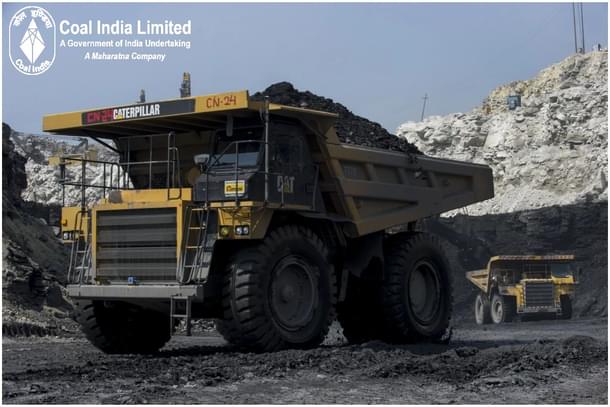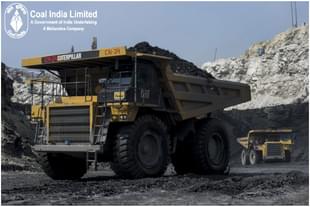Economy
"...And Stop Not Till The Coal Is Reached: What India Must Do To Ensure Coal Sufficiency
Sourav Datta
Sep 01, 2021, 06:02 PM | Updated 06:02 PM IST
Save & read from anywhere!
Bookmark stories for easy access on any device or the Swarajya app.


India is facing a coal shortage as coal inventories at power plants have fallen to low levels over the past month.
Thermal power producers (TPP) seem to have been caught off-guard as they have been unable to keep up with demand. The government has stepped in, and asked coal producers to prioritise power producers.
Shortage of coal during the monsoon season is a regular phenomenon as the mines often fill up with water, resulting in lower off-take of coal. But this year, in April, both power plants and Coal India had record coal inventory levels.
Within the short span of three months, the acute lack of coal has forced some power producers to even shut down operations. According to the government’s data, over half of the 135 coal powered plants had less than a week’s coal stock left and several have completely run out of coal.
The government has mandated that plants with more than 14 days’ worth of stock will receive smaller consignments, while plants with critically low levels of coal will receive larger consignments.
India is no stranger to Coal Shortages.
Despite the fact that coal fuels 70 per cent of India’s power production, India has faced coal shortages in the past. Though the government has been talking about becoming self-sufficient in coal for a long time, Coal India has been unable to satisfy India’s need for coal.
The most recent coal shortage occurred in 2017 — power plants had critically low stocks and the government had to step in to manage the situation.
Surprisingly, the reasons for both the current and the 2017 coal shortages have remained the same — A miscalculation of expected power demand, lower off-take from mines, and low power production from other avenues like hydropower, and high international prices.
In 2017, power companies had not stocked up on coal expecting lower demand and no raw-material supply constraints. However, when monsoon struck, most plants were left with less than 10 days’ worth of stock.
Despite, Coal India’s efforts, the situation persisted for a few months. Higher international coal prices also made it difficult for coal companies to source coal at competitive prices.
But as international demand lowered during the late-end of 2018 to 2020, coal companies could began importing coal at attractive prices again. Though India has high reserves of coal, India imports 25-30 per cent of its coal requirements because the demand outstrips supply.
A large part of the coal produced in India is of a lower quality as compared to imported coal.
The current coal crisis is a repeat of the 2017 episode. With lower production of coal during the monsoon, power producers that were sitting on record inventory levels a few months back are now struggling with sourcing coal. Importing has become less economical as coal has hit the highest international prices in a decade, performing better than commodities like crude oil and copper.
Becoming Self-Sufficient
The only solution to the problem is self-sufficiency. But so far, measures towards self-sufficiency have not borne fruit. Coal India’s production growth has been unable to keep pace with the growth in coal demand as difficulty in land acquisition and in obtaining environmental clearances have prevented it from growing nimbly like private sector companies.
Quite possibly, the bloated organisational structure also plays a role in its relatively slow growth. Nevertheless, the company has managed to grow production from around 530 million tonnes in financial year 2016 to around 600 million tonnes in 2021.
To revitalise the sector, the government has allowed commercial mining. Earlier coal mines would only be allocated to private players for specific reasons such as captive power generation. But now, companies can mine and sell the product on the markets. Setting up private coal mines might take a few more years, which means that Coal India would still remain the only player in the space.
Who Gains, Who Loses?
Some power producers might witness a drop in margins with the rising prices of fuel. Other power producers have already shut down due to the lack of coal. But the ones with fuel linkages and fuel supply agreements are likely to remain safe.
The shortage of coal has also forced states to buy power from short-term sources like power exchanges, power trading companies and bilateral trades.
Prices on the spot market have shot up from an average of around Rs. 3 to an average of Rs. 6.59, with prices during peak demand going to Rs 20 per unit.
With the increase in prices, some power producers who do not have long-term power purchase agreements will benefit from the increase in prices. These producers can sell their power on the short-term market and earn handsome revenues.
For instance, Tata Power and Adani Power that operate plants running on imported coal have already sought permission from the government to sell power on the exchanges as their input costs are high.
Though both the plants have PPAs signed up, a tussle over tariffs has resulted in low returns for the two plants. Power exchanges like Indian Energy Exchange are likely to benefit from growing short-term volumes.
However, the trade-off between prices and volumes might cause lower off-take by open-access customers. IEX’s stock has already moved up by 27 per cent in the last week. Coal India is likely to be a beneficiary from the shortage of coal as e-auction prices increase, and its fixed cost structure ensures higher margins. Coal India’s stock has risen by five per cent while Sensex has risen by around two per cent during the last five days. The current crisis would also force the company to become more efficient and improve productivity like it did in the past.
The current crisis is not limited to power producers but also might also adversely affect companies operating in the fertilizer, cement and metal-refining sectors.
Companies in these sectors often have their own captive power plants which are run on coal. With the current shortage of coal, these companies might have to buy higher cost coal, buy external electricity or reduce production.
The current crisis is a reminder of India’s lack of self-sufficiency in a critical sector. Despite several measures taken by the government, India still remains heavily dependent on imported coal. But the crisis also brings an opportunity for India to improve on the fuel security front.





